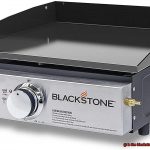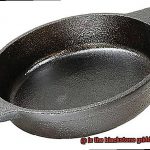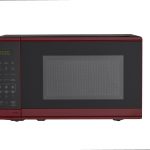Microwaves have revolutionized the way we cook and reheat food, making our lives easier and more convenient. But with so many options available, how do you know which one to choose? One crucial factor to consider is the wattage of the microwave. It might seem like a small detail, but it can make a big difference in your daily routine.
In this blog post, we’ll explore the differences between a 900 watt and 1000 watt microwave. We’ll dive into how wattage affects cooking time, what types of food each microwave is best suited for, and even energy consumption. Whether you’re a busy professional who needs quick meals or an adventurous home cook looking to experiment with new recipes, we’ve got you covered.
So sit back, relax, and get ready to learn about the power of microwaves. We’ll help you decide which wattage is right for your needs and budget. By the end of this post, you’ll have all the information you need to make an informed decision when it comes to buying your next microwave.
Contents
What is Wattage?
If you’ve ever shopped for appliances, you’ve probably heard the term “wattage” thrown around. But what does it really mean? When it comes to microwaves, wattage is a critical factor that determines how quickly and evenly your food will be cooked or heated.
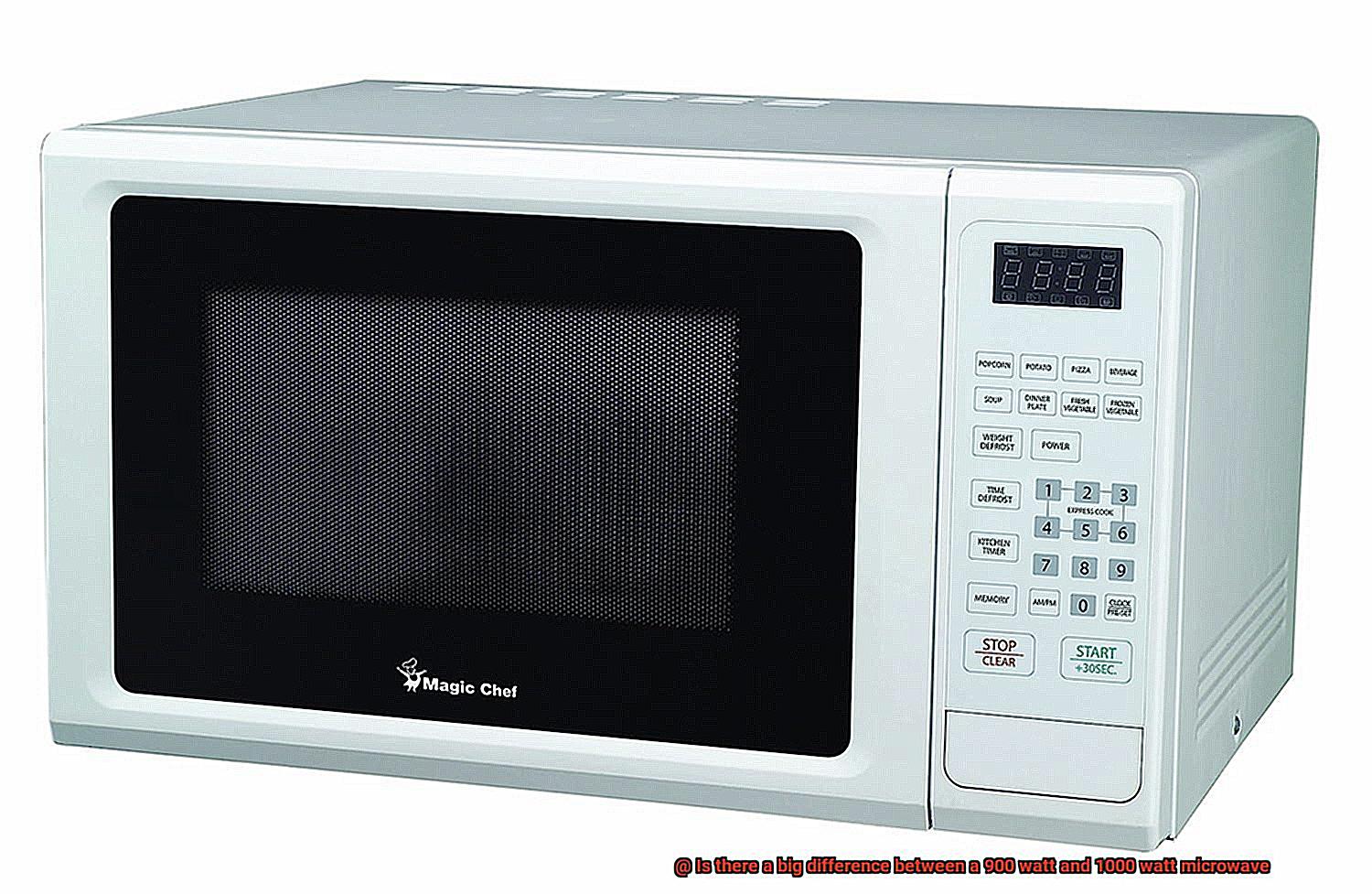
Essentially, wattage measures the rate at which energy is being used or consumed by an appliance. A higher wattage microwave produces more energy and thus cooks food faster than a lower wattage microwave. For instance, a 1000 watt microwave will cook food about 15-20% faster than a 900 watt microwave.
While higher wattage often means faster cooking times, it doesn’t always translate to better performance. The size of the microwave and the type of food being cooked also play a significant role in determining how well it performs. For certain foods, a larger microwave with a lower wattage may perform just as well as a smaller microwave with a higher wattage.
But there’s more to consider when choosing a microwave than just cooking speed and performance. Power consumption is another critical factor to keep in mind, as a 1000 watt microwave will use slightly more energy than a 900 watt microwave. However, this difference in energy usage is typically minimal and may not be noticeable unless you use your microwave frequently.
Ultimately, the best choice for you depends on your specific needs and preferences. If you’re short on time or need to cook something quickly, a higher wattage microwave might be the better option for you. But if speed isn’t your primary concern, a lower wattage microwave can still get the job done effectively. You should also take into account the size of the microwave and the type of food being cooked.
Difference between 900 and 1000 Watt Microwave
It’s time to consider the difference between a 900 watt and 1000 watt model. As an expert on microwaves, I’m here to help you make an informed decision.
Wattage is a crucial factor to consider when choosing a microwave. It determines how quickly and evenly your food will be cooked or heated. But wattage isn’t the only factor that affects performance. The size of the microwave and type of food being cooked also play a significant role.
Now, let’s dive into the difference between a 900 watt and 1000 watt microwave. A 900 watt microwave is perfect for small households or those with limited kitchen space. It’s also ideal for people who don’t use their microwave frequently. However, if speed is a priority, keep in mind that it may take longer to heat up food than a 1000 watt microwave.
A 1000 watt microwave is perfect for larger households or those who frequently use their microwave. It heats up food much faster than a 900 watt microwave, making it a more convenient option for busy individuals. But remember, higher power capacity comes with a higher price tag. So, consider your budget before making a decision.
In addition to wattage, other features such as sensor cooking and convection cooking can also impact efficiency and speed. Sensor cooking automatically adjusts cooking time and power based on the moisture level of the food, while convection cooking uses a fan to circulate hot air for faster and more even cooking.
Benefits of a 1000 Watt Microwave
A 1000 watt microwave might just be the solution you need. As a kitchen appliance expert, I have discovered the many benefits of investing in a 1000 watt microwave.
Let’s start with speed. One of the most significant advantages of a 1000 watt microwave is its ability to cook food faster than lower wattage models. You can save precious time in the kitchen, whether you’re heating up leftovers or preparing a full meal. For example, popcorn that takes 2 minutes to cook in a 900-watt microwave can be ready in just over a minute in a 1000-watt microwave. That’s impressive.
But it’s not just about speed. A 1000 watt microwave also distributes heat more evenly throughout your food, reducing the likelihood of hot spots and cold spots. This means that your dish will be cooked more consistently, resulting in better taste and texture.
For those with larger families or frequent guests, a 1000 watt microwave is ideal. With faster cooking times and more even heating, you can prepare meals quickly and efficiently, even in larger quantities. This is particularly useful during holidays or special occasions where you may need to cook multiple dishes at once.
In addition to these benefits, many 1000 watt microwaves come with pre-programmed settings for specific foods such as popcorn, pizza, or vegetables. This feature saves you from guessing cooking times or power levels for different dishes. Moreover, some models even have sensor cooking technology that adjusts cooking time and power based on the food’s moisture levels and temperature, making cooking even easier and more convenient.
Drawbacks of a 1000 Watt Microwave
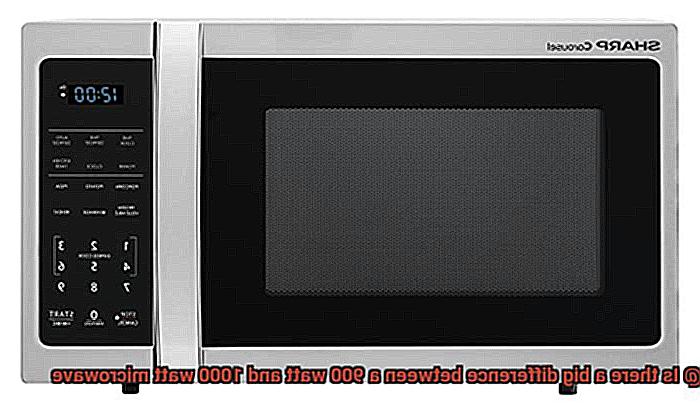
While a 1000 watt microwave might seem like the perfect solution for quick and easy meals, there are some drawbacks that you should consider before making a purchase.
First and foremost, cost is a major factor to consider. A 1000 watt microwave will typically cost more due to its higher wattage, which requires more powerful components in its construction. For those on a budget, a 900 watt microwave may be a more practical option.
Another drawback of a 1000 watt microwave is the learning curve. Cooking with high-powered microwaves requires some adjustment to avoid burning or overcooking your food. If you are not familiar with using high-powered microwaves, you may find it challenging to use at first.
One of the most significant drawbacks of a 1000 watt microwave is the risk of uneven cooking and overheating. The higher wattage generates more heat, which can cause certain areas of your food to overcook while others remain undercooked. This can result in burnt food on the outside while being undercooked on the inside.
Lastly, it’s essential to consider the electricity consumption of a 1000 watt microwave compared to lower wattage options. If you use your microwave frequently, you may notice an increase in your energy bills due to its higher power consumption.
Benefits of a 900 Watt Microwave
The solution to this problem lies in the 900 watt microwave. As an expert on the benefits of this kitchen appliance, I’m here to tell you why it should be your next purchase.
Energy consumption is a major concern for most households. With a 900 watt microwave, you can rest easy knowing that it uses less energy and costs less to operate over time compared to its 1000-watt counterpart. This makes it not only cost-effective but also eco-friendly.
When it comes to cooking performance, a 900 watt microwave is no slouch either. Its lower power output allows for slower and more even cooking, making it perfect for dishes that require longer cooking times such as casseroles or baked potatoes. This ensures that your food is cooked through evenly without any hot spots or cold spots.
The versatility of a 900 watt microwave is also worth mentioning. It can handle delicate foods such as fish, vegetables, and sauces without overcooking them or causing them to dry out. With more control over the cooking process, you can adjust the power level and cooking time as needed to achieve the perfect results.
Drawbacks of a 900 Watt Microwave
Microwaves are a kitchen essential and a 900 watt microwave is a popular choice for many households due to its affordability. However, there are some drawbacks to using this type of microwave that should be considered before making a purchase.
One of the major drawbacks of a 900 watt microwave is its slower heating time compared to higher wattage models. If you’re in a rush or have limited time to cook or warm up your meals, waiting an extra 30 seconds for your food to heat up can be frustrating. Additionally, frozen dinners or large cuts of meat may not cook evenly or may even be undercooked in a low wattage oven.
Another issue with a 900 watt microwave is its limited cooking options. Certain recipes require specific power levels and cooking times that may not be possible with a lower wattage oven. This means that you may have to adjust cooking times and settings significantly or even miss out on certain meals altogether.
Defrosting food can also be a challenge with a 900 watt microwave. If you frequently need to defrost meat or other frozen items quickly, a low wattage oven may not be powerful enough to get the job done in a timely manner.
It’s important to note that a 900 watt microwave may not be suitable for cooking or reheating certain types of food, such as frozen dinners or large cuts of meat, which require high temperatures to cook properly. This can result in unevenly cooked food or even undercooked food, which can be unsafe to consume.
Overall, while a 900 watt microwave can be an affordable and convenient option for many households, it’s important to consider your specific needs before making a purchase. If you frequently cook frozen dinners or large cuts of meat, require specific power levels for recipes, or need to defrost food quickly, a higher wattage oven may be a better option for you.
Factors to Consider When Choosing Between a 900 and 1000 Watt Microwave
Although the difference may seem minimal, it can make a significant impact on your cooking experience. As an expert in this field, let me guide you through the key factors to consider when making your decision.
Firstly, let’s talk about cooking time. If you’re someone who is constantly on-the-go and needs meals prepared quickly, then a 1000 watt microwave is the way to go. It will cook food faster than a 900 watt model, which can be a real game-changer for busy households. You won’t have to sacrifice precious time waiting for your food to heat up. However, if you don’t mind waiting an extra minute or two for your food to warm up, then a 900 watt microwave may suffice.
Next up is energy consumption. While discussing electricity bills might not be the most exciting topic, it’s essential to consider when making a purchase like this. A 1000 watt microwave will consume more electricity than a 900 watt model, leading to slightly higher energy bills over time. However, this difference isn’t significant enough to break the bank. If energy efficiency is crucial for you, then a 900 watt model may be the better choice.
Last but not least, cost. As with most purchases, price is always a factor to consider. A 1000 watt microwave will generally be more expensive than a 900 watt model due to its increased power and efficiency. However, the cost difference may not be significant enough to justify the extra expense for some consumers. If you’re budget-conscious or don’t require all that additional power, then a 900 watt microwave may be the way to go.
In summary, when selecting between a 900 and 1000 watt microwave, it ultimately comes down to personal preference and individual needs. If you value speed and efficiency in your cooking, then a 1000 watt model is the way to go. If you’re budget-conscious or don’t require all that additional power, then a 900 watt microwave may be a better fit for you. Both options can get the job done; it just depends on what’s most important to you.
RlvUfZiTsiw” >
Conclusion
To sum up, choosing between a 900 watt and 1000 watt microwave depends on various factors. The wattage of the microwave is crucial in determining how quickly and evenly your food will be cooked or heated. A higher wattage microwave cooks food faster than a lower wattage one, but the size of the microwave and the type of food being cooked also play a significant role.
If you have a large household or frequently use your microwave, then a 1000 watt model is perfect for you. It heats up food much faster, making it ideal for busy individuals. However, keep in mind that higher power capacity comes with a higher price tag.
On the other hand, if you have limited kitchen space or are budget-conscious, then a 900 watt microwave may be the better fit for you. Its lower power output allows for slower and more even cooking, making it ideal for dishes that require longer cooking times such as casseroles or baked potatoes. It’s also more energy-efficient and cost-effective compared to its higher wattage counterpart.
Ultimately, your choice should depend on your specific needs and preferences. If you value speed and efficiency in your cooking, then go for the 1000 watt model. But if you want an affordable option that can cook your meals just as well without taking up too much space in your kitchen, then opt for the 900 watt model.
In conclusion, always consider factors like household size, frequency of use, budget constraints, and types of food you typically cook before making any purchase decisions.




